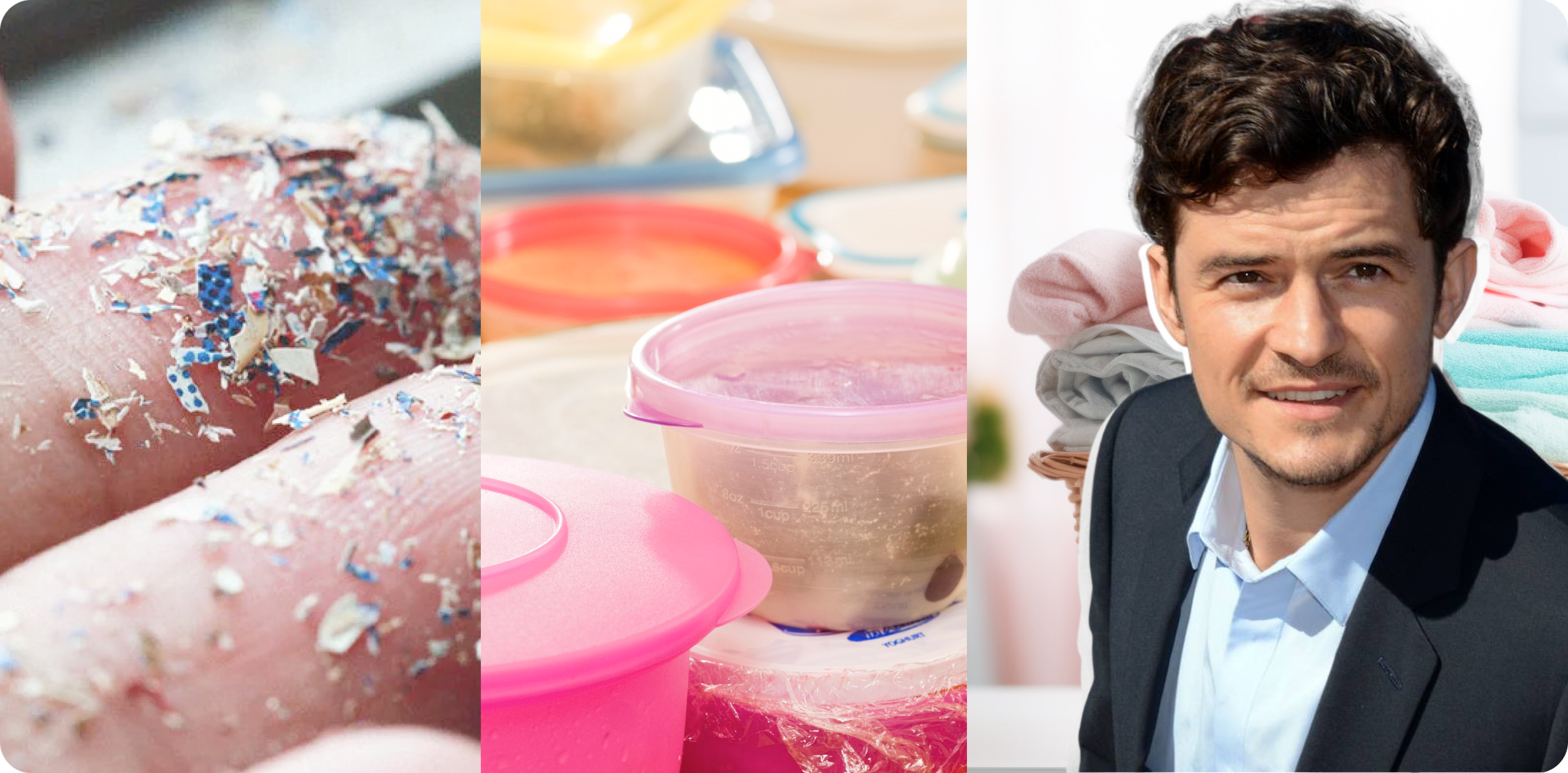Orlando Bloom and the $13K Detox: Can You Really Filter Microplastics from Your Blood?
Orlando Bloom and the $13K Detox: Can You Really Filter Microplastics from Your Blood?
Author: Team Grove
Orlando Bloom may be known for starring in Hollywood blockbusters slaying pirates, but lately, he’s making headlines for something a little less cinematic: spending $13,000 to have microplastics filtered from his blood.
If you’ve seen the stories floating around, you’re not alone. And if you’ve wondered whether this is something we should all be worried about — or if it’s even real — you’re in the right place.
Let’s unpack what’s going on here.
What exactly is Orlando doing?
The treatment, offered by a clinic in London, involves a process called apheresis. In simple terms, blood is drawn from the body, plasma is separated and filtered, and then the “cleaned” plasma is returned. The promise? Fewer microplastics, heavy metals, and environmental toxins floating around in your bloodstream.
Sounds kind of like a spa day for your cells, right?
However, there’s no scientific consensus yet that this treatment actually works. Yes, researchers have detected microplastics in human blood, lungs, and even placentas — which is alarming.¹ But no peer-reviewed study has shown that filtering your plasma can remove those particles effectively, or that doing so improves health outcomes.
That doesn’t mean Orlando’s wrong to care. It just means the rest of us don’t need to panic or pay up thousands to start protecting ourselves.
Practical ways you can reduce your microplastic exposure
If you’re concerned about microplastic exposure, there are a handful of simple, evidence-backed ways to reduce your intake without the huge price tags:
1. Ditch plastic bottles
Stainless steel is your best bet when it comes to drinkware. Plastic bottles can leach microplastics — and even some glass bottles have plastic linings or caps that can break down over time.
2. Avoid microwaving leftovers in plastic
Heating up leftovers in plastic containers can cause microplastics to leach into your food.² Choose glass or ceramic instead for storing food and reheating.
3. Filter your water
Microplastics have been found in both bottled and tap water. A high-quality water filter (especially one with reverse osmosis or carbon block filtration) can help cut down on what you’re drinking — without the $13K price tag.
4. Be a laundry detective
Synthetic fabrics like polyester shed microfibers when washed, which go down the drain and into waterways.³ Choose natural fibers like cotton, wash less often, and use a microfiber filter if you can.
5. Read your ingredient labels
Many personal care and cleaning products still include microplastic ingredients like synthetic polymers and microbeads. These don’t just impact your health — they’re harmful to aquatic life and the environment, too.
Why this matters for more than just you
Here’s the bigger picture: microplastics start outside the body and work their way in. They start with the packaging, products, and pollution we create every day. They break down into tiny particles that end up in soil, oceans, and drinking water. What’s bad for your body is usually bad for the planet — and vice versa.
That’s why the most powerful thing you can do isn’t book an IV cleanse. It’s rethinking what you bring into your home in the first place.
At Grove, we’re committed to helping you Go Beyond Plastic™ — not just in packaging, but in ingredients, daily routines, and the bigger systems we all rely on. Real change doesn’t require a clinic visit. It starts at home.
Your health. Your home. Your choice.
If this story got you thinking, you’re not alone. It’s totally normal to want to detox your life — to make sure what’s in your body, and what’s around it, supports your well-being. And the truth is, you don’t need celebrity-level resources to make it happen. You just need a place to start.
Making small changes to your daily routine can go a long way. Swapping plastic bottles, choosing a product that’s free from synthetic polymers, or filtering your water makes a difference — for your health, and for our planet.
Sources
1 Garcia, M. A., Liu, R., Nihart, A., El Hayek, E., Castillo, E., Barrozo, E. R., Suter, M. A., Bleske, B., Scott, J., Forsythe, K., Gonzalez-Estrella, J., Aagaard, K. M., & Campen, M. J. (2024). Quantitation and identification of microplastics accumulation in human placental specimens using pyrolysis gas chromatography mass spectrometry. Toxicological Sciences, 199(1), 81–88. https://doi.org/10.1093/toxsci/kfae021
2 Li, Y., Liu, C., Yang, H., He, W., Li, B., Zhu, X., Liu, S., Jia, S., Li, R., & Tang, K. H. D. (2024). Leaching of chemicals from microplastics: A review of chemical types, leaching mechanisms and influencing factors. Science of The Total Environment, 906, 167666. https://www.sciencedirect.com/science/article/abs/pii/S0048969723062939
3 Dalla Fontana, G., Mossotti, R., & Montarsolo, A. (2020). Assessment of microplastics release from polyester fabrics: The impact of different washing conditions. Environmental Pollution, 264, 113960. https://doi.org/10.1016/j.envpol.2020.113960


